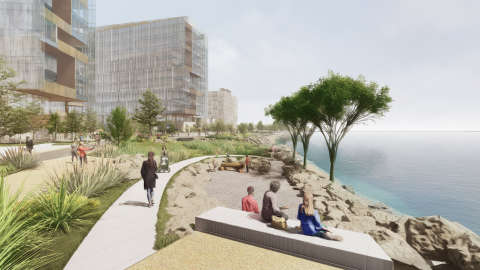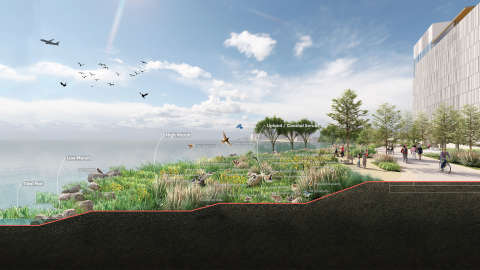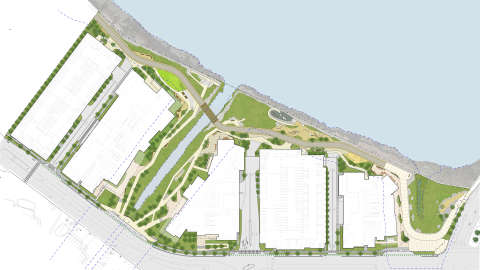
Creating Rich Native Habitat Along a Dense Urban Shoreline
Designed to follow the vision set by the recently adopted Burlingame General Plan, the site will set the bar for resilient development in the area. The design includes investment in long-term sea level rise protection, pursuing robust clean energy standards and delivering acres of native-based habitat and thoughtfully activated, accessible open space for the enjoyment of generations to come. A defining feature of Peninsula Crossing is the surrounding natural environment. The design celebrates and enhances this by reintroducing vital habitat zones and adding hundreds of new trees and drought-resistant, native plantings that will flourish along a naturally beautiful and resilient living shoreline. The site’s abundant open and green spaces will welcome a diversity of interests and audiences, with areas dedicated to active play and community events, and others designed for quiet contemplation or taking in fresh air and stunning views of the Bay.
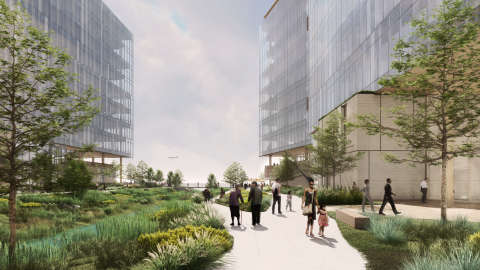
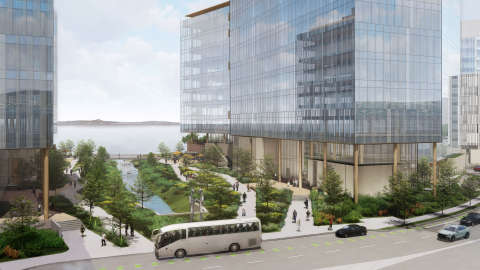
In addition to providing recreational connectivity on the waterfront by building over a quarter mile of multi-modal Bay Trail, the design includes new pathways that will provide the community with easy access to the site and the shore. The project promotes public transit and investment in transportation demand management strategies that aim to reduce single occupancy vehicle traffic, including widened sidewalks, protected bike lanes, dedicated bike parking and amenities, and intersection improvements to increase pedestrian and cyclist safety.





